Categoría "Energia"
Se han encontrado 76 Coincidencias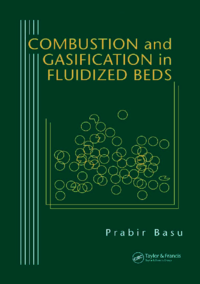
Combustion and Gasification in Fluidized Beds
Lecho Fluidizado
85 Visitas | 131 Descargas | 2014-03-28 04:31:38 | raulito
Se abordan las cuestiones fundamentales con la combustión y la gasificación en lecho fluidizado.El libro presenta el lecho fluidizado en calderas y gasificadores y los compara con otras opciones de generación a partir de petróleo y biomasa; aborda los elementos esenciales de hydrodinámica de la fluidización. Se discuten los principios de la gasificación y su aplicación en el diseño de gasificadores de cama fluidizada, asi como los elementos esenciales de la combustión de combustibles sólidos y su aplicación en los diferentes tipos de camas fluidizadas. Igualmente se abordan los aspectos de contaminación al utilizar el lecho fluidizado y su relación con la mitigación del cambio climático. Además se abordan temas de la transferencia de calor en el lecho fluidizado y como se funcionan y se diseñan las calderas con lecho fluidizado.
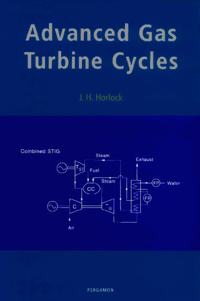
Advanced Gas Turbine Cycles
Ciclos con Turbinas de Gas
60 Visitas | 71 Descargas | 2014-04-07 16:06:49 | raulito
This book describes the thermodynamics of gas turbine cycles (although it does touch briefly on the economics of electrical power generation). The strictures of classical thermodynamics require that “cycle” is used only for a heat engine operating in closed form, but the word has come to cover “open circuit” gas turbine plants, receiving “heat” supplied through burning fuel, and eventually discharging the products to the atmosphere (including crucially the carbon dioxide produced in combustion). The search for high gas turbine efficiency has produced many suggestions for variations on the simple “open circuit” plant suggested by Barber, but more recently work has been directed towards gas turbines which produce less COz, or at least plants from which the carbon dioxide can be disposed of, subsequent to sequestration.
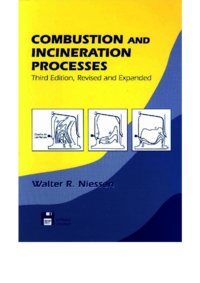
Combustion and Incineration Processes
Combustión e incineración
64 Visitas | 74 Descargas | 2014-04-07 16:12:38 | raulito
The third edition of Combustion and Incineration Processes incorporates technology updates and additional detail on combustion and air pollution control, process evaluation, design, and operations from the 1990s. Also, the scope has been expanded to include: (1) additional details and graphics regarding the design and operational characteristics of municipal waste incineration systems and numerous refinements in air pollution control, (2) the emerging alternatives using refuse gasification technology, (3) lower-temperature thermal processing applied to soil remediation, and (4) plasma technologies as applied to hazardous wastes. The accompanying diskette offers additional computer tools. The 1990s were difficult for incineration-based waste management technologies in the United States. New plant construction slowed or stopped because of the anxiety of the public, fanned at times by political rhetoric, about the health effects of air emissions. Issues included a focus on emissions of ‘‘air toxics’’ (heavy metals and a spectrum of organic compounds); softening in the selling price of electricity generated in waste-to-energy plants; reduced pressure on land disposal as recycling programs emerged; and the opening of several new landfills and some depression in landfilling costs. Also, the decade saw great attention paid to the potential hazards of incinerator ash materials (few hazards were demonstrated, however). These factors reduced the competitive pressures that supported burgeoning incinerator growth of the previous decade.
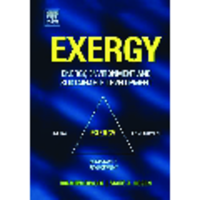
EXERGY Handbook
74 Visitas | 110 Descargas | 2014-04-07 16:19:22 | raulito
This book is a research-oriented textbook and therefore includes practical features in a usable format often not included in other, solely academic textbooks. This book is essentially intended for use by advanced undergraduate or graduate students in several engineering and non-engineering disciplines and as an essential tool for practitioners. Theory and analysis are emphasized throughout this comprehensive book, reflecting new techniques, models and applications, together with complementary materials and recent information. Coverage of the material is extensive, and the amount of information and data presented is sufficient for exergy-related courses or as a supplement for energy, environment and sustainable development courses, if studied in detail. We believe that this book will be of interest to students and practitioners, as well as individuals and institutions, who are interested in exergy and its applications to various systems in diverse areas. This volume is also a valuable and readable reference for anyone who wishes to learn about exergy.
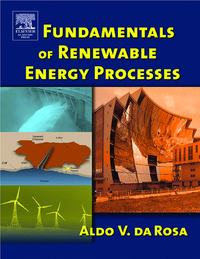
Fundamentals of Renewable Energy Processes
Energía Renovable
88 Visitas | 87 Descargas | 2014-04-07 16:22:29 | raulito
This book examines the fundamentals of some renewable energy processes. A limited eort is made to describe the "state of the art" of the technologies involved because, owing to the rapidity with which these technologies change, such description would soon become obsolete. Nevertheless, the underlying principles discussed in the book are immutable and are essential for the comprehension of future developments. An attempt is made to present clear physical explanations of the pertinent principles.
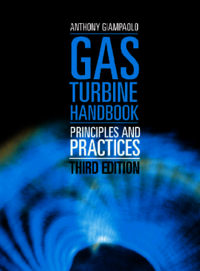
Gas Turbine Handbook: Principles and Practices
Turbina de Gas
56 Visitas | 71 Descargas | 2014-04-07 16:40:46 | raulito
This 3rd Edition is undertaken to cover a subject that captured my time and attention and is of interest to many people not usually involved with gas turbines. This subject is microturbines. Microturbines were first considered a viable product in the early-to-mid 1990’s. Part of the popularity with the idea of a very small gas turbine was the result of the successes with miniaturization in the electronic industry; part was the lack of competition for reciprocating engines; and part was the steadily increasing price & decreasing availability of electricity. Price and availability of electricity led to the concept now known as Distributed Generation (DG).
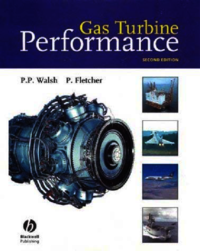
Gas Turbine Performance
Turbina de gas
61 Visitas | 66 Descargas | 2014-04-07 16:44:12 | raulito
This book is primarily aimed at engineers of all disciplines within the gas turbine industry, and will also be of significant value to students of mechanical and aeronautical engineering. It should also appeal to people outside the industry who have an interest in gas turbines. Experienced engineers will particularly welcome the database and list of formulae which it is hoped will make the book an invaluable reference tool.
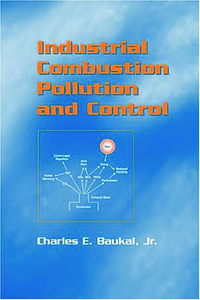
Industrial Combustion Pollution and Control
Combustión
78 Visitas | 96 Descargas | 2014-04-07 16:54:28 | raulito
This book, written primarily for the practicing engineer, is intended to fill a gap in the literature on pollution in industrial combustion. Many textbooks have been written on combustion, but these have included limited information about pollution from industrial applications. One of the purposes of this book is to synthesize, in a single, coherent reference source, a wealth of information from many relevant books, articles, and reports. A distinguishing feature of this book is that examines each topic in a somewhat specialized context to show how it affects pollution from industrial combustion processes. In Chapter 2, for example, the basics of combustion are considered, but from the focused perspective of combustion’s influence on pollution emissions. There is very little discussion of combustion kinetics, because this complicated subject is of more concern to researchers in the field than to practicing engineers. This book does not directly address subjects that have been more than adequately covered elsewhere, but, rather, examines those subjects in the context of how they influence the pollution generated by the combustion system.
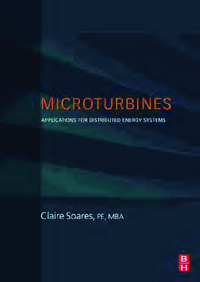
Microturbines
62 Visitas | 64 Descargas | 2014-04-07 16:59:24 | raulito
Microturbines, fuel cells, and hybrids are relatively new technologies. They all support distributed power generation and greenhouse gas emission reduction in some way, so technological development work in these areas is heavily subsidized by state and federal governments
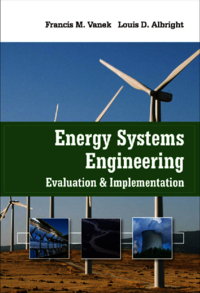
Energy Systems Engineering - Evaluation and Implementation
81 Visitas | 91 Descargas | 2014-04-08 14:03:05 | raulito
The goal of this book is to provide both professional engineers as well as engineering students interested in energy systems with essential knowledge of major energy technologies, including how they work, how they are quantitatively evaluated, what they cost, and what is their benefit or impact on the natural environment. A second goal is to provide the reader with an overview of the context within which these systems are being implemented and updated today and into the future. Perhaps at no time in recent history has society faced such challenges in the energy field: the yearning to provide a better quality of life to all people, especially those in the more impoverished countries, coupled with the twin challenges of a changing energy resource base and the effects of climate change due to increased concentration of CO2 in the atmosphere. Energy systems engineers from many disciplines, as well as non-engineers in related fields, will serve at the forefront of meeting these challenges.
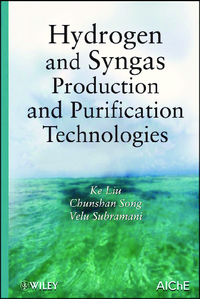
Hydrogen and Syngas Production and Purifi cation Technologies
53 Visitas | 59 Descargas | 2014-04-08 14:11:14 | raulito
The purpose of this is to provide a comprehensive source of knowledge on the recent advances in science and technology for the production and purifi cation of hydrogen and syngas. The book comprises chapters on advances in catalysis, chemistry and process for steam reforming and catalytic partial oxidation of gaseous and liquid fuels, and gasifi cation of solid fuels for effi cient production of hydrogen and syngas and their separation and purifi cation methods, including water - gas - shift, pressure swing adsorption, membrane separations, and desulfurization technologies. Furthermore, the book covers the integration of hydrogen and syngas production with future energy systems, as well as advances in coal - to - liquids and syngas - to - liquids (Fischer - Tropch) processes. All the chapters have been contributed by active and leading researchers in the fi eld from industry, academia, and national laboratories. We hope that this book will be useful to both newcomers and experienced professionals, and will facilitate further research and advances in the science and technology for hydrogen and syngas production and utilization toward clean and sustainable energy in the future.
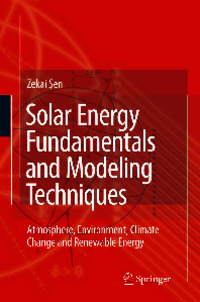
Solar Energy Fundamentals and Modeling Techniques
56 Visitas | 81 Descargas | 2014-04-08 14:14:51 | raulito
Solar radiation is an integral part of different renewable energy resources, in general, and, in particular, it is the main and continuous input variable from the practically inexhaustible sun. Solar energy is expected to play a very significant role in the future especially in developing countries, but it also has potential in developed countries. The material presented in this book has been chosen to provide a comprehensive account of solar energy modeling methods. For this purpose, explanatory background material has been introducedwith the intention that engineers and scientists can benefit from introductory preliminaries on the subject both from application and research points of view.
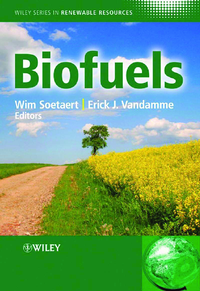
Biofuels
91 Visitas | 101 Descargas | 2014-04-08 14:19:44 | raulito
This volume on Biofuels covers the use and conversion technologies of biomass as a renewable resource to produce bio-energy in a sustainable way, mainly in the form of liquid and gaseous biofuels. These biofuels are a convenient renewable energy carrier for specific purposes, with transportation as an important application sector. Renewable biomass is produced annually, based on photosynthesis, and is available in different forms, depending on climatic conditions and economic situations around the world. Chemical and thermochemical methods, as well as fermentation and biocatalysis technologies, are essential to efficiently convert biomass directly or indirectly into biofuels, with bio-ethanol, biodiesel and biogas as today’s main practical players. In this context, green biotechnology, green chemistry and white biotechnology are to join forces to arrive at sustainable processes and fuels. The use of biofuels is quickly gaining momentum all over the world, and can be expected to have an ever-increasing impact on the energy and agricultural sector in particular. New and efficient ‘bio-cracking’ technologies for biomass are under development, while existing (thermo)chemical, fermentation and enzyme technologies are further optimized. These developments cover basic and applied research, pilot scale experimentation and demonstration plants for second generation biofuels.

Crossing the Energy Divide
76 Visitas | 82 Descargas | 2014-04-08 14:24:41 | raulito
This book makes two paradigm-challenging claims. First, physical energy plays a far more fundamental role in economic productivity and growth than most of the economists advising business and government have ever acknowledged. The implications for everyone who breathes, especially during the coming period of hoped-for recovery and transition to the clean-energy economy of the future, are enormous. Energy services aren’t just a large part of the economy; they’re a major part of what drives the economy. And if that is so, both the economic recovery and the energy transition will take far longer than the Obama administration has counted on—unless investment is targeted to the very specific technologies and industries that make energy services cheaper. Shotgun spending won’t do that. Second, the energy economy of the industrial world is so deeply dependent on fossil fuels that even the fastest conceivable growth of wind, solar, and other renewable-energy industries cannot substantially replace oil, coal, and natural gas for at least several decades. Virtually the entire capital infrastructure of the country—roads and highways, electric power plants, transmission lines, airlines, shipping, steel, chemicals, construction, and home heating and cooling—depends on fossil fuels. Even if the use of electric cars and solar roof panels were to grow as fast as the Internet did, they would still account for only a drop in the ocean of energy we will use during the next two decades.

FUNDAMENTALS AND TECHNOLOGY OF COMBUSTION
80 Visitas | 95 Descargas | 2014-04-08 14:30:15 | raulito
The book contains brief descriptions of fundamental and combustion processes, followed by an extensive survey of the combustion research technology. It also includes mathematical modeling of the processes covering mainly premixed and diffusion flames, where many chemical and physical processes compete in complex ways, for both laminar and turbulent flows. This provides a unique bridge between combustion fundamentals and combustion technology, which should make the book a valuable technical reference for many engineers and scientists. Moreover, the book gives the reader sufficient background of basic engineering sciences such as chemistry, thermodynamics, heat transfer and fluid mechanics. The mentioned research and mathematical models fit between small-scale laboratory burner flames, and large-scale industrial boilers, furnaces and combustion chambers. The materials of this book have been collected from previous relevant research and some selected papers of the authors and co-workers, which have been presented mainly in different refereed journals, international conferences and symposiums.
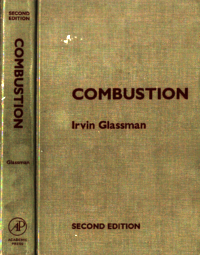
Combustion (Second Edition)
68 Visitas | 70 Descargas | 2014-04-08 14:38:21 | raulito
Motivations to write a second edition of Combustion were numerous. Great progress has been made in many areas of this field, and the original edition was being used as a text and therefore required problem sets and improved methods of explaining many of the basic concepts that had evolved over another decade of teaching. Every chapter of the original edition has been enlarged and, it is hoped, improved with new material, concepts, or methods of presentation.

PETROLEUM FUELS MANUFACTURING HANDBOOK
57 Visitas | 77 Descargas | 2014-04-08 14:42:51 | raulito
lower fuel consumption are a few illustrations of these changes. This book surveys the manufacture, blending, properties, specifications, and uses of petroleum fuels and specialty products (products made out of petroleum feedstock for nonfuel use except petrochemicals). There are a very large number of specialty products—petroleum solvents, bitumen for paving and industrial uses, lubricating oils, greases, white mineral oils, carbon black, petroleum coke, spray oils, and so on—to meet the requirements of industry. Possibly far more technical personnel are engaged in petroleum specialty manufacture and the handling of petroleum products than are found in refineries. Although petroleum fuels are generally made in refineries out of crude oil distillation, petroleum specialty products are made in relatively smaller downstream units starting with refinery streams as feedstock. A refinery may produce five or six basic products, such as liquified petroleum gas (LPG), naphtha, kerosene, diesel, and fuel oils, but specialty manufacturers may produce a large number of their products from these basic refinery products. There is very little published information on specialty manufacturing processes. The selection of a petroleum product for a specific job has become more challenging. Specifications and the test methods used on petroleum products are important for the proper selection of a petroleum product for a given end use.
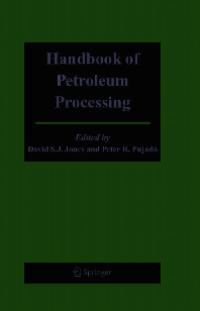
Handbook of Petroleum Processing
74 Visitas | 108 Descargas | 2014-04-08 14:52:20 | raulito
This reference work targets researchers who have chosen a career in this complex but essential industry as well as people who are new in the industry and are looking for easy references to the work in which they are involved. This Handbook is an essential addition to the libraries of universities which contain a chemical engineering faculty as well as to the libraries of engineering construction companies, and oil refineries
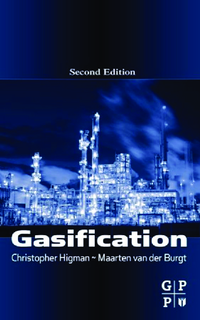
Gasification (Second Edition)
69 Visitas | 81 Descargas | 2014-04-08 14:57:50 | raulito
This book made important contributing that include the following: There has been an increasing awareness of “ greenhouse gas ” issues and the role that gasification can play in CO2 reduction strategies. The crude oil price has leapt from the $20–30 range to around $60–70 per barrel and higher raising the interest in all forms of coal-based technologies for energy conversion.
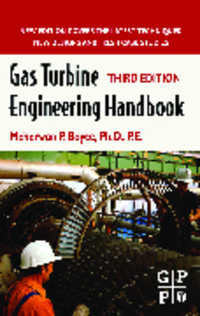
Gas Turbine Engineering Handbook (Third Edition)
61 Visitas | 113 Descargas | 2014-04-08 15:06:05 | raulito
Gas Turbine Engineering Handbook discusses the design, fabrication, installation, operation, and maintenance of gas turbines. The third edition is not only an updating of the technology in gas turbines, which has seen a great leap forward in the 2000s, but also a rewriting of various sections to better answer today’s problems in the design, fabrication, installation, operation, and maintenance of gas turbines. The third edition has added a new chapter that examines the case histories of gas turbines from deterioration of the performance of gas turbines to failures encountered in all the major components of the gas turbine. The chapter on Maintenance Techniques has been completely rewritten and updated. The revised chapter deals with Long Term Service Agreements (LTSAs), and special maintenance tables have been added so that you can troubleshoot problems on gas turbines that you may encounter.
Contribuir
Usted puede contribuir con Libros UCLV, es importante para nosotros su aporte..
Contribuir